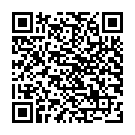|
|
|
| Module code: DFMEES-109 |
|
|
4VU (4 hours per week) |
|
5 |
| Semester: 1 |
| Mandatory course: yes |
Language of instruction:
German |
Assessment:
Exam
[updated 09.11.2022]
|
DFMEES-109 (P610-0134) Electrical Engineering - Renewable Energy and System Technology, Master, ASPO 01.10.2019
, semester 1, mandatory course
|
60 class hours (= 45 clock hours) over a 15-week period.
The total student study time is 150 hours (equivalent to 5 ECTS credits).
There are therefore 105 hours available for class preparation and follow-up work and exam preparation.
|
Recommended prerequisites (modules):
None.
|
Recommended as prerequisite for:
|
Module coordinator:
Marc Quirin, M.Sc. |
Lecturer:
Marc Quirin, M.Sc.
[updated 23.09.2022]
|
Learning outcomes:
After successfully completing this module, students will be familiar with the practical methods and applications in industrial image processing. More specifically, students be familair with basic methods and algorithms in image processing. Students will be able to systematically plan and implement an image processing task, both in the design of the hardware and software. The programming exercises in this module will emphasize the theoretical principles taught in the “front-end” and “back-end” of the image processing chain.
[updated 09.11.2022]
|
Module content:
Module content:
1. Introduction to the stages of machine vision
1.1. Selection criteria for an image processing system
1.2. Possible computations
1.3. Image processing chain
2. Technical basics for the “front-end” of the image processing chain
2.1. Lighting
2.2. Filters
2.3. Lenses
2.4. Basics of camera technology
2.5. Transmitting image information to the computer
2.6. Image artifacts
2.6.1. Aliasing
2.6.2. Image noise
3. The “back-end” of the image processing chain
3.1. Mathematical tools
3.2. Camera model and camera calibration
3.3. Color models
3.4. Image representation
3.5. Image preprocessing in spatial and frequency domain
3.6. Morphological operators
3.7. Segmentation
3.8. Labeling
3.9. Feature extraction
3.10 Classification
4. Summary
[updated 09.11.2022]
|
Teaching methods/Media:
Blackboard, lecture notes, Matlab, LabVIEW, Python
[updated 09.11.2022]
|
Recommended or required reading:
Tönnies Klaus D.: Grundlagen der Bildverarbeitung, Addison-Wesley Verlag, 2005
Jähne B.: Digitale Bildverarbeitung. Springer, 5. Edition, 2002
Haberäcker Peter: Digitale Bildverarbeitung, Carl Hanser Verlag München Wien, 1987
[updated 09.11.2022]
|

